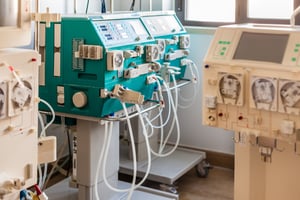Do You Really Know Your Pump Flow?
 Adequately delivered blood flow is necessary for effective hemodialysis, which according to a 2008 national Japanese survey, was on average 197 ± 31 ml/min. With this in mind, a group of Japanese clinicians sought to find the discrepancies between actual delivered flow and the pump flow reported by the dialysis machine.
Adequately delivered blood flow is necessary for effective hemodialysis, which according to a 2008 national Japanese survey, was on average 197 ± 31 ml/min. With this in mind, a group of Japanese clinicians sought to find the discrepancies between actual delivered flow and the pump flow reported by the dialysis machine.
For the study, delivered blood flow was measured with the Transonic Hemodialysis (HD02) Monitor at the beginning and at the end of each hemodialysis session in 100 patients with arteriovenous fistulas. The flows were compared with the flows that the pump reported. Delivered blood flow was also measured and compared with pump flows using three different gauge (17G, 16G, 15G) needles.
They found that, in many patients, actual delivered blood flow did not match the pump flow. The discrepancy between the two was ±5%. Furthermore, in the 16G and 17G needle groups, the percentage of patients with a delivered blood flow to pump flow ratio of less than one increased in accordance with the increase in pump flow or as the HD session progressed.
From these findings, the group concluded that selection of needle gauge and pump flow are important factors for determining actual delivered blood flow in hemodialysis patients. Secondly, 15G needles or larger are needed to obtain actual delivered blood flow of 241 mL/min or more. Finally, hemodialysis efficiency must be carefully monitored with Transonic delivered blood flow measurements.
Reference:
Kimata N, Wakayama K, Okano K, Hibi A, Sawada A, Tajima Y, Makabe S, Tsuchiya K, Mineshima M, Nitta K, Akiba T, “Study of discrepancies between recorded and actual blood flow in hemodialysis patients,” ASAIO J. 2013 Nov-Dec;59(6):617-21. (Transonic Reference # HD9860A)




